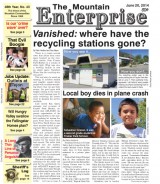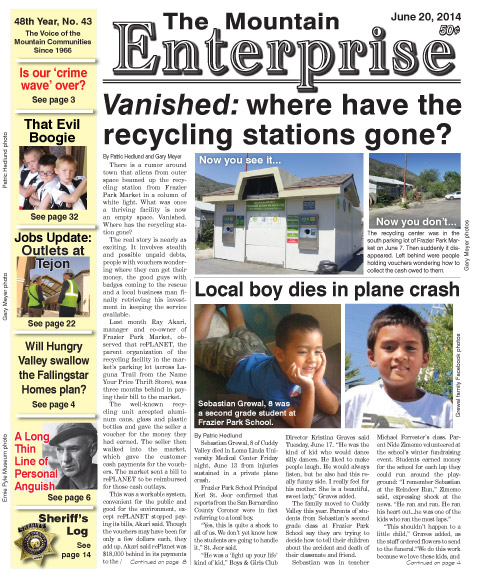Editor’s Note: Construction techniques currently used by the first utility-scale solar facilities in the Western Antelope Valley scrape and grade the desert, removing ground cover vegetation. Current mitigation methods required by the County of Los Angeles are inadequate.
Combined with natural events such as fierce winds and a three-year drought, surface grading of desert soils results in a shocking increase in the severity of dust storms—gigantic airborne clouds of sand and spores that amplify the danger of Valley Fever and create misery for the animals and humans who live there.
Local residents feel distant county, state and national government agencies have not been responsive to the problem. Communities are reaching out for knowledge and solutions. This workshop is a part of that effort. The public is invited to attend. There is no charge. —Patric Hedlund
Agenda: Dust Workshop in the Antelope Valley
(At West Side Community Church • 47707 N. 90th Street West• Antelope Acres, California 93536 • 9-4 p.m. Wednesday, June 25, 2014 )
Introductory note by Robert Kerekes, president of AATC
During the windy season of 2013 fugitive soil dust clouds in the Antelope Valley were more severe than anything most here have ever experienced before. In response to global climate change created by the burning of fossil fuels, renewable “green” energy is on the rise. Just about everyone agrees that solar based electrical production is a part of the solution. Yet large solar array facilities are in and of themselves environmentally destructive….
Isn’t it possible to build these facilities in the desert while enhancing it? How do we do it?
One of our immediate problems is what to do with already existing solar facilities, ones currently being built and those coming in the immediate future. Revegetation and reclamation, as well as a better understanding of the desert, are needed. How do we get that underway? How do we bring the political solutions into being? How will construction companies come to adopt the principal that preparing the desert up front is a lot easier than trying to fix it all after the fact?
The answers to these and other questions will be explored at this workshop exploring environmental, regulatory, economic and social solutions.
The workshop begins at 9 a.m. and ends at 4 p.m. broken into the morning session and the afternoon session with a short break midway between each session. Lunch at noon. Food provided by AATC.
The morning is for presentations. Afternoon commences with a breakout group followed with discussion by the entire group. Most presenters have asked for about 15 minutes with more time by both Michael Allen and Peter McRae. Morning session is moderated by Edith Allen, UC Riverside. Afternoon session moderated by Christopher McDonald.
Morning
Robert Kerekes Introductions. A recent history
Michael Allen UC Riverside Desert Ecology. Human interference and effects.
John Hayes East Kern AQMD. Review of 2013. Problems, solutions.
Bret Banks AVAQMD. Review of 2013. Problems, solutions.
Richard Campbell AVRCD, Dust Busters. Review and update.
Amrith Gunasaekara CDFA. Web Site. Farming
Andre Biscaro Farm Advisor
Peter McRae Quattro Environmental Revegetation
Afternoon
Breakout Group
Entire Group
To reach West Side Community Church on 90th Street West exit from the 14 onto Avenue F, go west to 90th, turn right (north) for one block and church is on the west side of the street.
Sponsored by the Antelope Acres Town Council, PO Box 6708, Lancaster, Ca., 93539-6708
Web Site: antelopeacrestowncouncil.org Phone: 661 728-0095 Email: rrhomestead@qnet.com
________________
Full Day Workshop Set for Western Antelope Valley on Blowing Dust
(original story in The Mountain Enterprise)
The original Antelope Acres Town Council is hosting a full-day 9 a.m. to 4 p.m. Dust Workshop on June 25 about the impacts of construction on local neighborhoods by utility-scale solar and wind energy companies.
Robert Kerekes of the Antelope Acres council said it is beginning to appear that the problems of the Western Antelope Valley are shared with residents of San Bernardino County, Riverside and beyond. There is talk, he says, of developing coalitions to create a more effective voice.
“Yesterday I spent an hour and a half on a conference call with Professor Edith Allen and Christopher McDonald, both of U.C. Riverside, to work on the agenda for the workshop. Out of this workshop will be issued a White Paper.
I am suggesting the formation of a new, unifying nonprofit “Save Our Deserts” that has no territorial restrictions and will draw…members and bring financing. Everyone is up against the same problem everywhere,” Kerekes wrote.
“We are trying to fill a vacuum, as information in this area is seriously lacking.
The push for ‘green’ renewable energy is so strong at all levels, and there is such a perception of renewables being so good for the environment, that the very real problems are either ignored, or not realized.
“We are looking for short term and long term solutions. Can large solar facilities be sited in the desert that are environmentally sound? Or should we be looking for other ways to generate via solar panels?
“How can we improve on dust control environmentally for those companies that are already here, or in process [of gaining entitlements]?” he asks.
—PH
Contact Robert Kerekes at rrhomestead@qnet.com 661.728.0095 for more details.
This is part of the June 20, 2014 online edition of The Mountain Enterprise.
Have an opinion on this matter? We'd like to hear from you.


